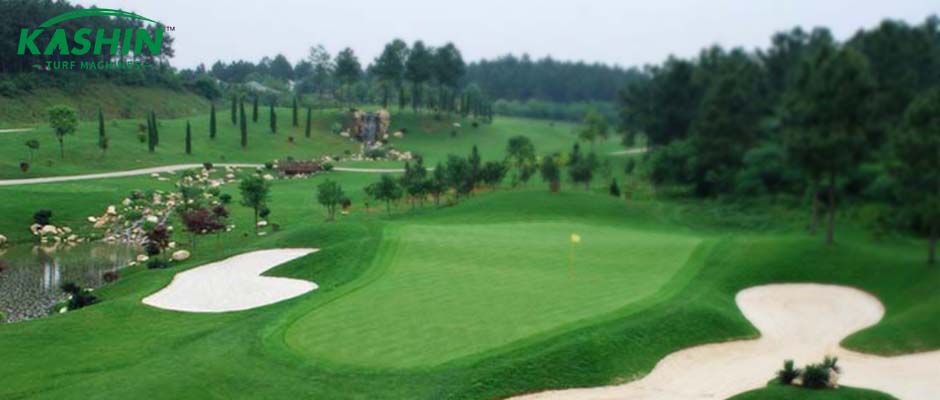The green is a piece of finely managed lawn located around the golf course hole. It is the most important and most meticulously maintained part of the golf course. Its quality determines the grade of the golf course. High-quality greens require low lawns, high density of branches and leaves, smooth and uniform surface, and good resilience. Therefore, it is very difficult to manage and maintain the greens. Daily management and maintenance should be done from the following aspects:
1. Irrigation
Irrigation is an indispensable work for daily maintenance of the greens. The water holding capacity of the sand base bed of the green is poor, and low mowing will reduce the water absorption capacity of the lawn grass to a certain extent. This requires sufficient irrigation of the lawn to ensure the vigorous growth of the lawn grass.
Watering should follow the principle of small amounts and multiple times, especially in summer or dry autumn. Pay attention to keeping the surface sand and rhizomes moist. There is no limit to the number of watering per day, ranging from 3 to 6 times. The watering time should be at night or early morning. During this period, the wind is not strong, the humidity is high, and the temperature is low, which can reduce water evaporation. If you irrigate at noon, half of the water will evaporate before reaching the ground. Therefore, watering should be avoided when the sun is strong at noon. However, excessive humidity in the lawn canopy often leads to diseases. Irrigation at night will keep the lawn grass wet for a long time, which will make the wax layer and other protective layers on the surface of the lawn plant thinner, making it easy for pathogens and microorganisms to take advantage of the situation and spread to the plant tissue. Therefore, early morning is the best time to irrigate the lawn. Water should be irrigated thoroughly and fully, and do not flood the lawn. Each watering should be limited to moistening the surface and not forming a water flow. Generally, water can penetrate 15 to 20 cm. When watering, the nozzle should be adjusted to a fine rain mist to avoid large water drops that will impact the surface of the green.

2. Fertilization
The green lawn is built on a sand-based turf bed. The turf bed has poor fertilizer retention. A large part of the base fertilizer such as peat mixed in is lost due to leaching. Therefore, the green lawn requires a lot of fertilizer, and the nitrogen fertilizer required in the first year is more than in later years. When planting a green lawn, the first fertilization should be done when the seedlings are about 2.5 cm high. Nitrogen fertilizer is mainly used, 3 grams per square meter. Fertilizer should be applied every 10 to 15 days thereafter, with an application rate of 1 to 3 grams per square meter. In general, pure nitrogen fertilizer and full-price fertilizer should be rotated. Full-price fertilizer can be applied in combination with tying in spring and autumn, and nitrogen fertilizer is usually used for topdressing. Full-price fertilizer is mainly high-nitrogen, high-phosphorus, and low-potassium quick-acting fertilizer, and the ratio of nitrogen, phosphorus, and potassium is preferably 5:3:2.
According to the dosage form of fertilizer and the needs of lawn grass, fertilizer application usually includes spraying, and dry granular fertilizer is applied by broadcasting, strip application, and point application. Liquid fertilizer and water-soluble fertilizer can be sprayed, and dry granular fertilizer can be applied by broadcasting or point application. Manual fertilizer application or mechanical fertilizer application usually divides the fertilizer into two parts, half horizontally and half vertically. When the amount of fertilizer is small, it can also be mixed with sand for more uniform fertilization. It is best to apply fertilizer when the seedlings are dry to prevent the fertilizer from sticking to the leaves of the seedlings and causing burns. Water should be applied immediately after fertilization to prevent the fertilizer from burning the seedlings. Fertilization should be continued during the young green stage until the green is mature.
Post time: Nov-12-2024
